|
   |
|
Page 7 |
Newsletter 127 Winter 2019 © Hampshire Mills Group |
|
Vatnmylla – Faroese Norse Mills
Ruth Andrews
Pictures by Keith and Ruth Andrews
|
|
Also this year we revisited the Faroe Islands which
we had previously explored 9 years
ago.
Geographically, the Western Isles and the Faroes are
quite similar, isolated groups of islands in the
wild wet Atlantic, with an economy based on fishing
(and whaling) and subsistence farming, and with a
fairly sparse population. Their traditional
approach to flour milling is therefore strikingly
similar but the buildings appear quite different due
to the available rock types. The mills on Lewis
were constructed from boulders of Lewisian gneiss,
one of the oldest and toughest rocks ion the world,
whereas the Faroes are volcanic and the rock is
slightly easier to use for straight walls. Also
timber (historically from driftwood) seems to be
more widely available. I suspect that the mills in
the Faroes continued to be an integral part of the
community long after those in the Western Isles had
been abandoned.
|
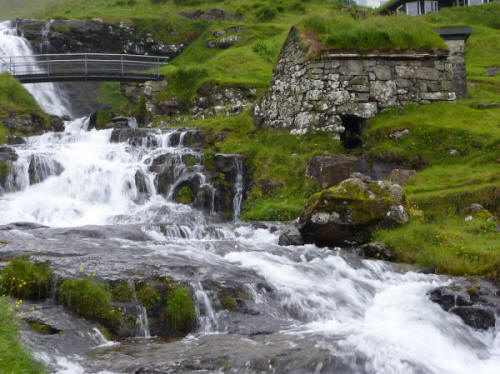 |
They are typically located on streams in the centres
of villages and are cherished as an important memory
of the past. In the Western Isles it is very
noticeable that the mills are generally located on
isolated and less accessible sites, often a long way
(miles) from other buildings.
The mill in Bour (left and below) is one such
cherished survivor.
|
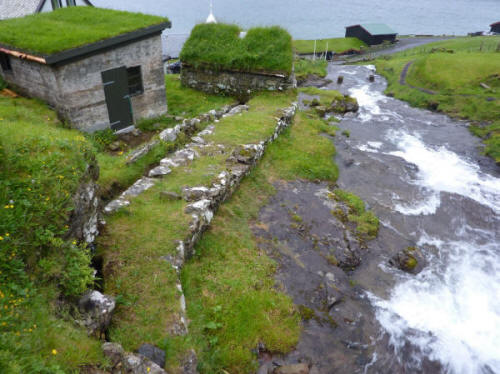 |
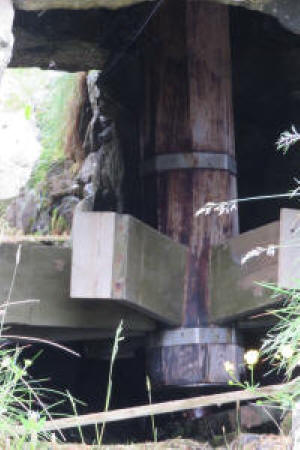 |
|
When we visited in 2010 its stones were in position
(left) so you could clearly see the click
mechanism attached to the hopper and the wear
pattern on the runner stone.
This year the runner stone had been lifted and was
displaying its rather stylish dressing. The mill is
possibly still usable and is clearly now a party
venue, complete with night lights.
|
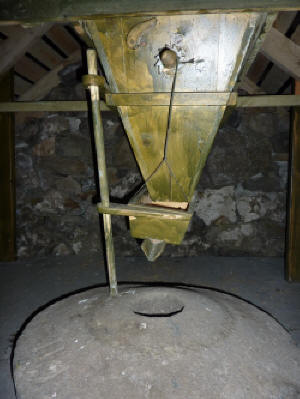 |
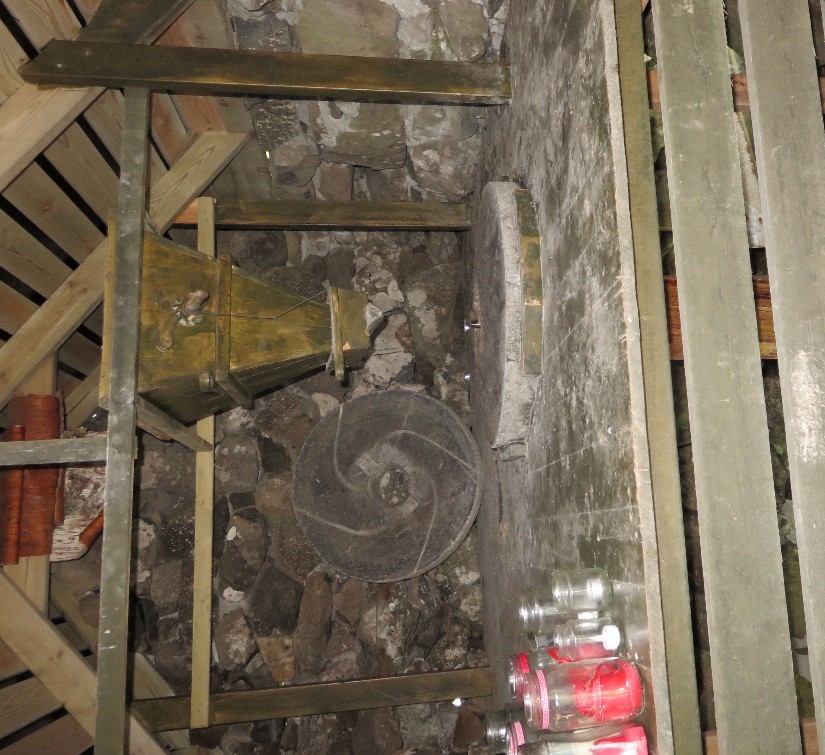 |
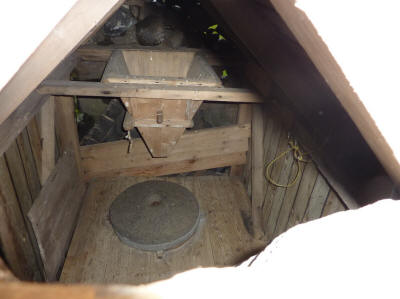 |
The much smaller mill at Kvivik
(left and
below)
is next to a road. It is clearly a modern
restoration.
It is constructed with two parallel stone walls and
weather-boarded sides. It was locked but in 2010 I
managed to get a picture of the inside by poking my
camera through a hole in the eaves.
|
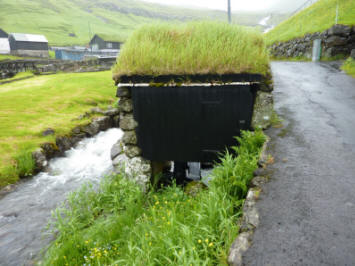 |
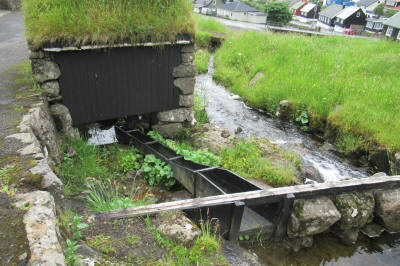 |
|
Our guide book singled out the mill on Kunoy
as being the last authentic representative of a
Faroese mill. Sadly since 2010 it has become rather
overgrown and is firmly locked, but it appears to be
in sound condition.
|
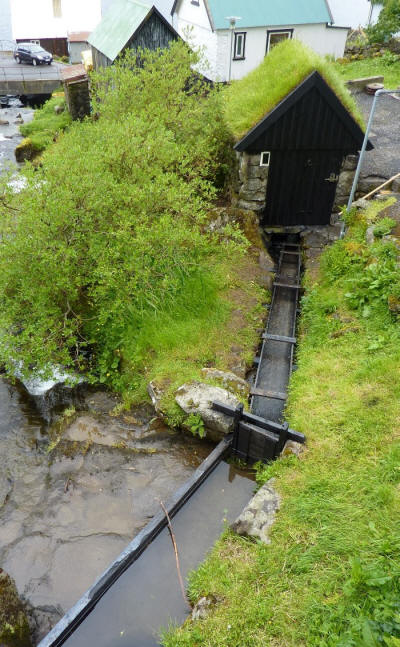 |
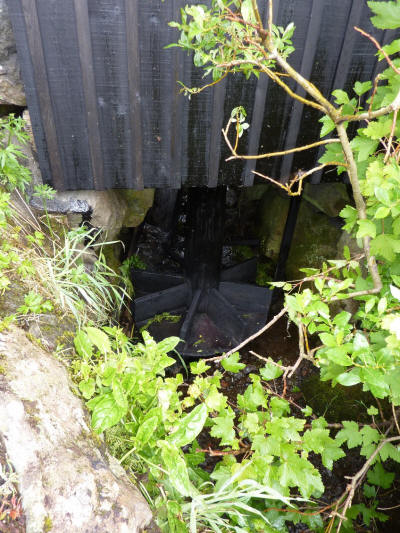 |
|
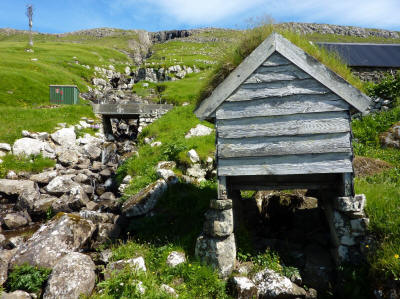
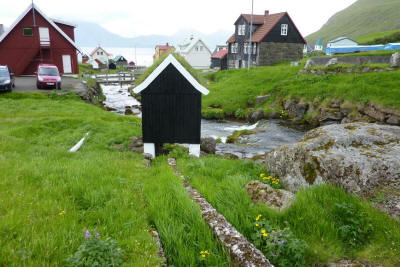 |
Other than this our encounters were limited to small
empty structures which had lost their mechanisms
like Skarvanes (upper
left)
and Gjogv (lower
left)
or closed sheds like that at Sandavagur (below).
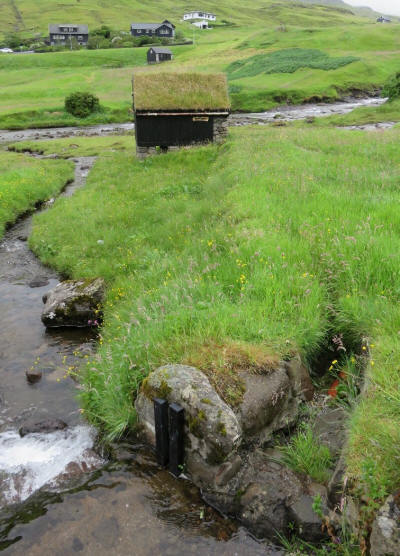 |
|
|
